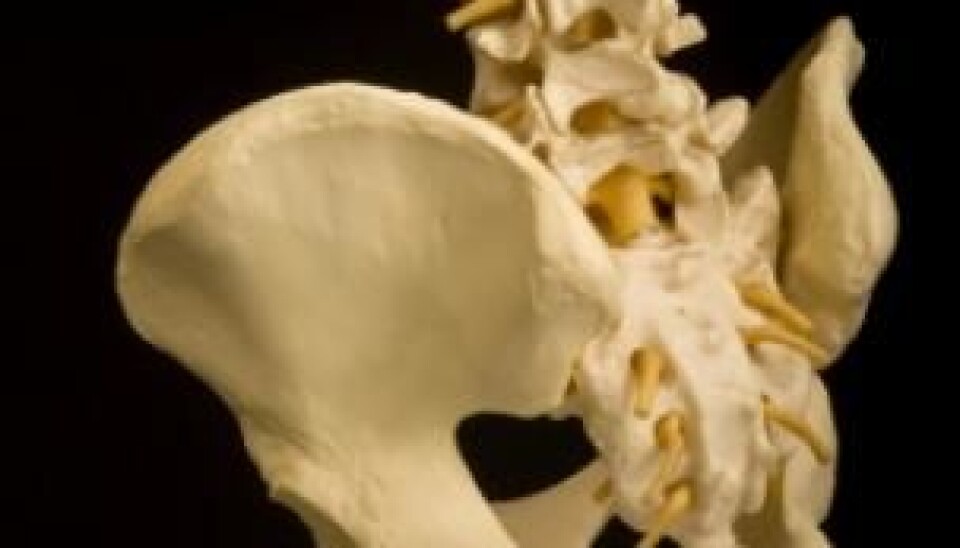An article from Norwegian SciTech News at NTNU

Growing bones from seaweed
Artificial hips would not be quite so artificial, if researchers succeed in developing living bone mass.
Denne artikkelen er over ti år gammel og kan inneholde utdatert informasjon.
NTNU researchers have recently discovered that alginate beads can control the creation of calcium phosphate – one of the skeleton's essential building blocks.
Now they're dreaming of how they can use this finding to grow new bones.
Alginates are biopolymers derived from seaweed. They have the ability to thicken and stabilize solutions and form gels, and are used in a number of applications in both the food and medical industries.
Alginate beads are much like fish oil capsules, but much smaller, and without oil. The beads show particular promise in cell transplantation.

And now it appears that alginate beads can also be used as a kind of greenhouse for growing bone mass.
PhD candidate Magnus Ø. Olderøy in NTNU's Department of Physics, and colleagues in two other departments have actually managed to produce a form of calcium phosphate – hydroxyapatite – with help from alginate beads.
Mimicking nature
"We formed calcium phosphate in the alginate beads in a manner that enabled the alginate to control the shape and size of the crystals," Olderøy says. "It was pretty special, and we were surprised we got there so quickly."

Calcium phosphate may occur in numerous forms, but inside the alginate beads the scientists found nano-sized crystals of hydroxyapatite. These show many similarities with the mineral found in bones.
Alginate plays the role of collagen, a protein that is the other important building block in the skeleton.
"When you try to mimic materials found in nature, the interaction between ingredients is very important in determining the final material. This is precisely what seems to have worked out in our experiments," says Olderøy.
Instant skeleton
Now researchers are working to study the properties of the new material, such as its strength and stability. In addition, the new material has been combined with stem cells to see if they can create the conditions for cells to become bone cells.
They are working in collaboration with the Department of Cancer Research and Molecular Medicine at NTNU and Technische Universität München in Germany.
If the researchers succeed, the living bone mass could be implanted into skeletal injuries, such as in hip replacements, and could eventually grow to form new functional bones out of living tissue instead of plastic.
But time will tell how long it takes before the researchers can grow new hips of the correct size.
-------------------------------------------------






























